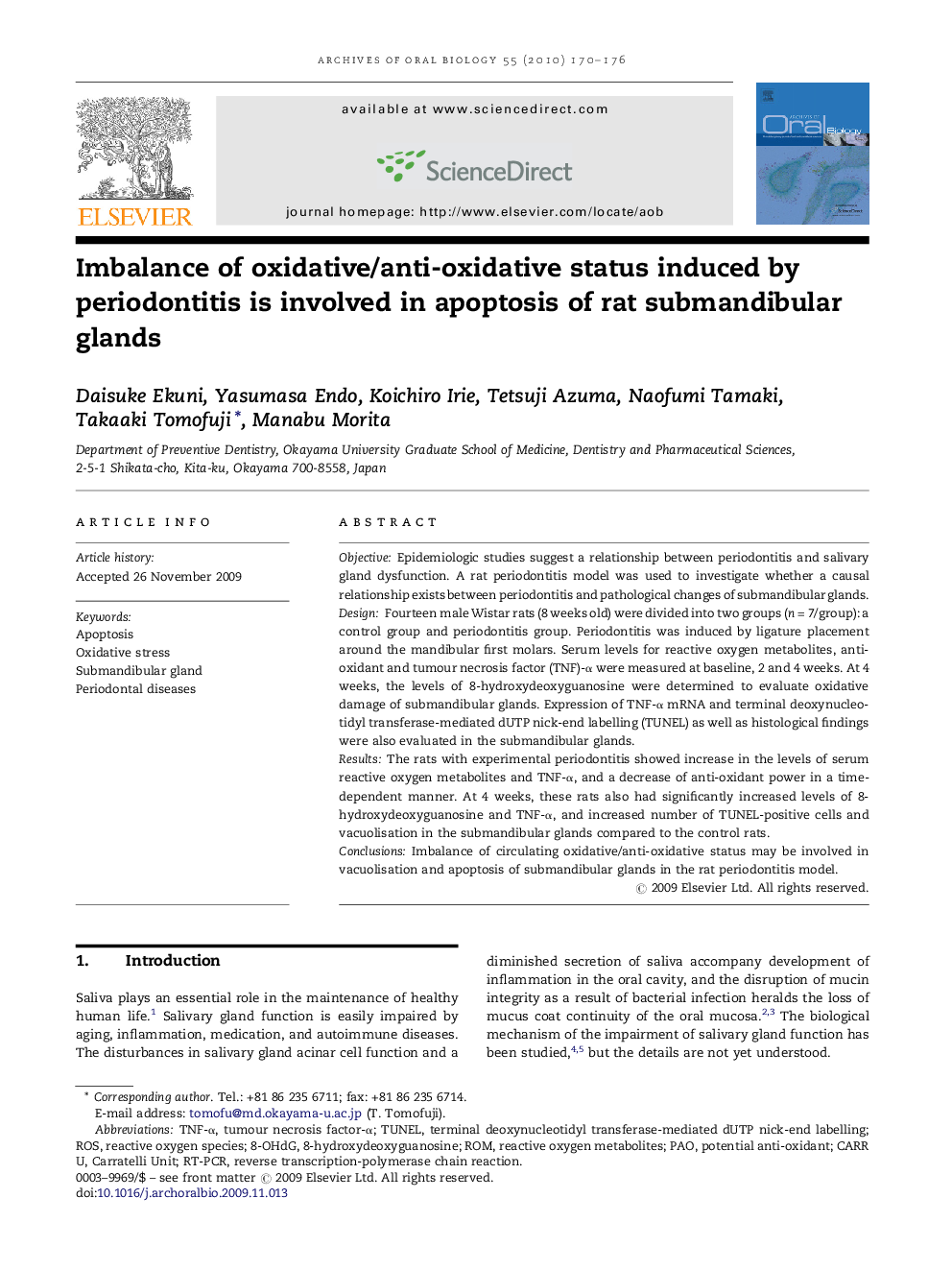| Article ID | Journal | Published Year | Pages | File Type |
|---|---|---|---|---|
| 3121544 | Archives of Oral Biology | 2010 | 7 Pages |
ObjectiveEpidemiologic studies suggest a relationship between periodontitis and salivary gland dysfunction. A rat periodontitis model was used to investigate whether a causal relationship exists between periodontitis and pathological changes of submandibular glands.DesignFourteen male Wistar rats (8 weeks old) were divided into two groups (n = 7/group): a control group and periodontitis group. Periodontitis was induced by ligature placement around the mandibular first molars. Serum levels for reactive oxygen metabolites, anti-oxidant and tumour necrosis factor (TNF)-α were measured at baseline, 2 and 4 weeks. At 4 weeks, the levels of 8-hydroxydeoxyguanosine were determined to evaluate oxidative damage of submandibular glands. Expression of TNF-α mRNA and terminal deoxynucleotidyl transferase-mediated dUTP nick-end labelling (TUNEL) as well as histological findings were also evaluated in the submandibular glands.ResultsThe rats with experimental periodontitis showed increase in the levels of serum reactive oxygen metabolites and TNF-α, and a decrease of anti-oxidant power in a time-dependent manner. At 4 weeks, these rats also had significantly increased levels of 8-hydroxydeoxyguanosine and TNF-α, and increased number of TUNEL-positive cells and vacuolisation in the submandibular glands compared to the control rats.ConclusionsImbalance of circulating oxidative/anti-oxidative status may be involved in vacuolisation and apoptosis of submandibular glands in the rat periodontitis model.
